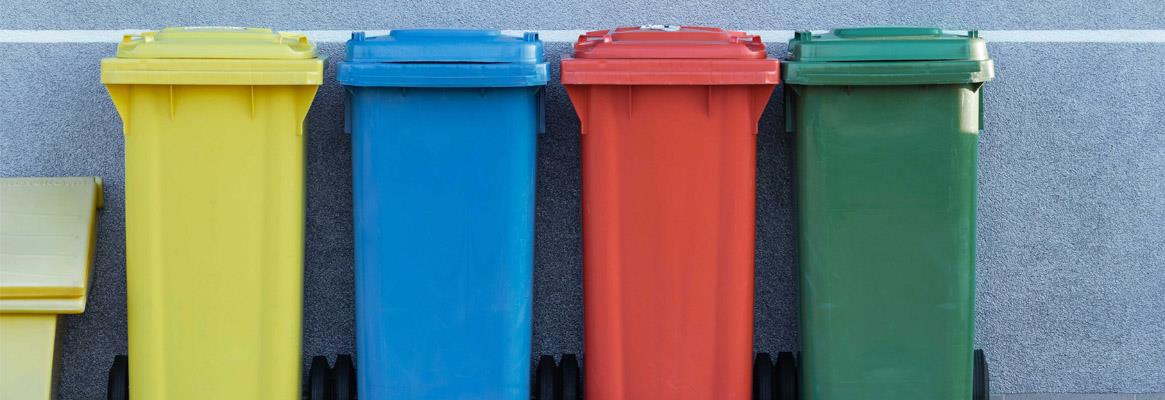Textile recycling is starting to catch on, but are all fibres equally recyclable?
In previous posts, we covered the pollution crisis caused by excessive textile production and waste around the globe. In this post, we'll cover what we can do about it. It's inevitable that at some point, everyone will have worn-out clothing on their hands. No matter how high-quality a piece of clothing is, it won't last forever. What can consumers do with their worn and tattered clothing? Are there sustainable options? The answer to the second question is YES. To find the answer to the first question, read on.
What is Textile Recycling, and Why is it Important?
A smart, viable option for consumers looking for a way to responsibly discard their worn-out clothing is to recycle it. Recycling is a concept that is now very common and well-known around the globe, but the practice is most common with paper, plastic and glass. Textile recycling only accounts for a fraction of the material recycled annually. Hopefully, that's about to change.
More and more people are recognizing the importance of textile recycling. Currently, over 80 billion garments of clothing are being produced on an annual basis, resulting in a massive 16 million tons of solid textile waste in the year 2015. The numbers are staggering. But now that education regarding the clothing waste crisis is out, consumers are talking about textile recycling. The benefits to the environment are incredible, including a decrease in landfill space, lesser demand for dyes, reduced energy consumption, and the general avoidance of virgin fibres.
Textile recycling itself is defined by the process of recovering and reusing material from old clothing (or other fibre goods). The process includes a number of steps, including donation, collection, sorting and processing, making it a hyper-involved, multi-step process... but many believe it's worth it.
The Process of Textile Recycling
As stated above, textile recycling is not a simple process, but it is a valuable one. The process is markedly different for natural vs. synthetic textiles. For natural fibres, collected clothing is sorted first by material and colour. Fabric is sorted by colour so that fabric, ideally, does not require additional dyeing in the future. This both saves energy, and avoids further energy usage and pollution.
After the sorting process is complete, each textile is shredded or pulled apart into yarn fibres, which are then thoroughly cleaned. After cleaning, the yarn requires re-spinning, so that it can be weaved or knitted into fabric once again.
Synthetic or polyester-based textiles are also shredded, but instead of being cleaned and re-woven, they are ground down into polyester chips. These chips can be melted and used to produce new polyester fibres for fabric in the future.
Because the process is divided by natural vs synthetic fibres, "mixed" or blended fibres pose a problem to the recycling centers. When clothing items are made with two or more different materials, it's harder to separate these materials for the purpose of reusing them. Unfortunately, mixed fibres are increasingly common is clothing production. Jeans and other stretchable materials are created by combining cotton with elastane. While it creates a stretch that is appealing to consumers, the technology needed to separate these materials is not yet available. For this reason, environmentalists are urging consumers to seek out clothing made with just a single fibre source to make recycling a viable option.
How to Recycle Clothing, Step by Step
Here's a step-by-step guide to clothing recycling, from the consumer's perspective.
Step 1. Sort
First, it's important to sort clothing based on its condition. Create piles of clothing that are in great or new condition, usable but used condition, and poor, unwearable condition.
Step 2. Consignment
Any clothing that is in great condition can be sold to consignment stores to be used again without any energy required for recycling. This option also allows consumers to profit from their unwanted garments.
Step 3. Donations
Used clothing that is still in wearable condition can be given to thrift stores or other secondhand shops for resale. Though givers may not profit from this step, the stores that sell the items to other buyers often use the profits to give jobs to underprivileged workers, or donate the money to a charitable cause.
Step 4. Recycling
Clothing that is in poor condition that cannot be reworn is the clothing consumers can recycle instead of donating. Any stained, torn, or tattered clothing can be given to a drop-off spot for textile recycling. Earth911 has a great resource for locating recycling centers here: http://earth911.com/recycling-center-search-guides/
The Next Step: Responsible Shopping
As mentioned above, what consumers do after purchasing clothing is important, but what they do while shopping is equally important. Buyers need to pay attention to the clothing they buy for multiple reasons. First, mixed fibres that cannot be separated from each other make recycling impossible, thus adding to the clothing pollution crisis the Earth currently faces. Second, consumers that participate and encourage fast fashion trends not only purchase clothing of low-quality, but they encourage the clothing industry to continue creating clothing at an alarming, and unnecessarily excessive rate.
Textile recycling is a two-way street, requiring consumers and recyclers to work together to save the planet from becoming inundated with clothing waste.
This article has not been edited by Fibre2Fashion staff and is re-published with permission from synzenbe.com








Comments